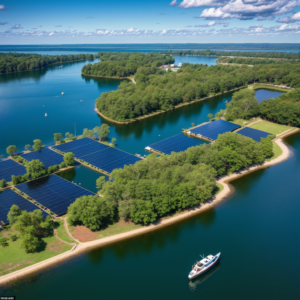The Future Of The Energy
Sun from The Tube
The early 21st century brings new challenges that chemical industry tries to resolve. In fact, the industry in the 21st century is characterized by a shift towards sustainable energy and addressing the challenges of fossil fuels (peat, coal, oil, natural gas).
According to the U.S. Administration for information on energy, the primary source of energy is still fossil fuels and in the following schedule: 36 percent oil, coal 27.4 percent, natural gas 23 percent, which is a total of 86.4 percent of the total energy consumed in 2007. Less than 15 percent of global energy use is met by non-fossil fuels, which are alternative sources of energy in which the energy of the water is used 6.3 percent, 8.5 nuclear and other (geothermal, solar, wind energy, waste wood and ), only 0.9 percent.
Energy and chemistry
Chemistry is first of all the traditional disciplines offering new solutions for renewable energy. Since energy cannot be done, all the processes for obtaining it actually means a type of conversion from one form to another. Many conversions require corresponding molecular or solid energy carriers, so it is obvious that in these processes chemical sciences has a key role. It offers chemistry processes and materials necessary for the reaction of transformation of energy. Finally, the carriers of fossil energy that today is mostly used are also based on the biochemical processes of photosynthesis.
The chemists have been provided with an exceptional opportunity to affect the changing in the energy system. Their role is essential in:- Advancing the technology of clean and efficient combustion of fossil fuels without the formation and release of unwanted pollutants
- Enable more efficient renewable energy technologies, but also in
- Development of technology with greater capacity for storing energy.
The transition to a sustainable energy system requires a systematic approach before isolated developing of individual technologies or products. For a successful transition and success of chemical scientists it needs joint support of decision makers and policy makers, the business sector and especially the chemical industry.
Chemistry: Key to eco-efficient energy supply
Today’s energy forecasts show that the increased population and general prosperity of many people in 2050 would lead to 50 percent more energy needs, unlike today. Reliable, affordable and environmentally acceptable energy sources, is a global concern of all.
Adopting measures to increase resources and energy efficiency, and creating a developed manufacturing process, the European chemical industry has reduced its full impact on the environment. Innovation and new technologies in the chemical industry contribute to the development of society as a whole.
Using nanotechnology, the sector is focused on providing solutions to the problems of the environmental remediation, environmental monitoring and more efficient use of resources. The chemical industry is the primary supplier of materials which make the global economy more efficient and enabling the development of new renewable energy market.
Chemical companies have a significant opportunity to improve the efficiency of these operations. For example, the European chemical companies have reduced total emissions of greenhouse gas by about 30 percent from 1990 to 2005, compared to 60 percent increase in production, while Japanese chemical companies reduced incremental energy use by 83 per cent between 1990 to 2010.
Chemistry is a key initiator in the development of new energy technology because it allows ambitious targets to achieve the financial means available.
Specific examples
When it comes to the influence of the chemical industry to the transition of energy sources, the world’s leading chemical company BASF, based in Ludwigshafen in Germany, has the focus on sustainable resources held in the center of its research and development programs.
Development programs of BASF are realized by the huge number of experts from various areas in collaboration with a broad set scientific network and excellent cooperation with world leading universities and other scientific institutions.
According to Dr. Andreas Creamer, board member of the chemical giant, one-third of all development projects of BASF is dedicated to the projects related to energy efficiency and climate protection. Dr. Creamer said that only in 2012 the BASF company offered about a dozen new solutions concerning the development of materials for renewable sources of energy: materials for the wind power, solar energy and organic photovoltage.
Apart from making special highly efficient material sources of energy, BASF in his researches has dedicated to solving the problem of the material to store the same energy. The fact that renewable energy generated from wind turbines or solar panels is not available at every step in every moment, it is important to make portable and stationary storage units. In this sense, one of the examples of a good solution of transfer of gases (such as hydrogen or methane) is a substance invention MOF (metal organic framework), material that has very high internal porosity that allows a much larger amount of gas that can be stored in a tank.
If you drive a car on natural gas with the tank that is made with technology MOF you will can in the same storage capacity to hold 50 percent more gas than usual. That directly affects the increased driving range on a single tank.
Each year the company BASF took several hundreds of new products, materials and formulas and they are more developments related to renewable energy sources, storage safer and more efficient transport of the same.








